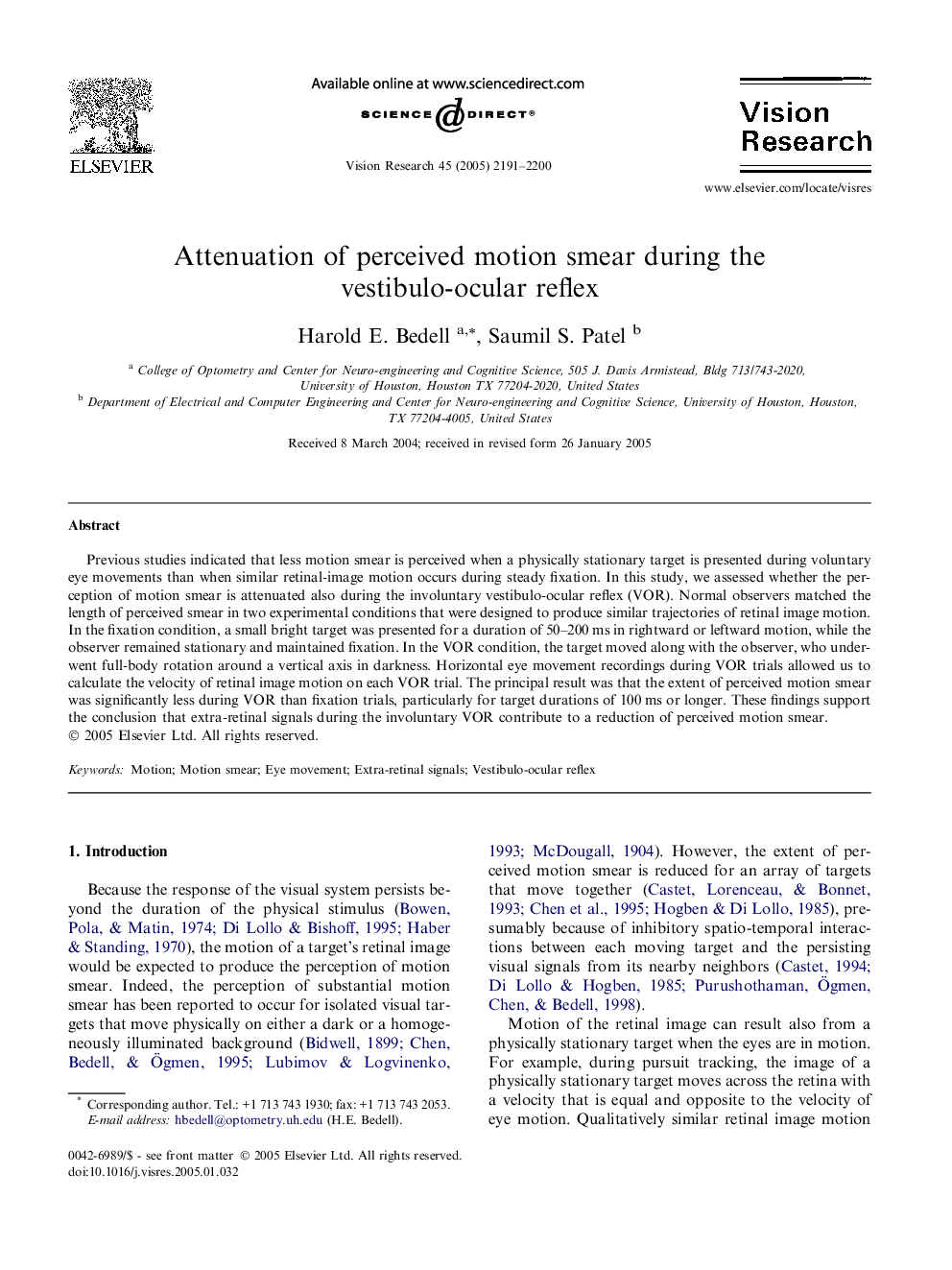| Article ID | Journal | Published Year | Pages | File Type |
|---|---|---|---|---|
| 4036810 | Vision Research | 2005 | 10 Pages |
Previous studies indicated that less motion smear is perceived when a physically stationary target is presented during voluntary eye movements than when similar retinal-image motion occurs during steady fixation. In this study, we assessed whether the perception of motion smear is attenuated also during the involuntary vestibulo-ocular reflex (VOR). Normal observers matched the length of perceived smear in two experimental conditions that were designed to produce similar trajectories of retinal image motion. In the fixation condition, a small bright target was presented for a duration of 50–200 ms in rightward or leftward motion, while the observer remained stationary and maintained fixation. In the VOR condition, the target moved along with the observer, who underwent full-body rotation around a vertical axis in darkness. Horizontal eye movement recordings during VOR trials allowed us to calculate the velocity of retinal image motion on each VOR trial. The principal result was that the extent of perceived motion smear was significantly less during VOR than fixation trials, particularly for target durations of 100 ms or longer. These findings support the conclusion that extra-retinal signals during the involuntary VOR contribute to a reduction of perceived motion smear.
